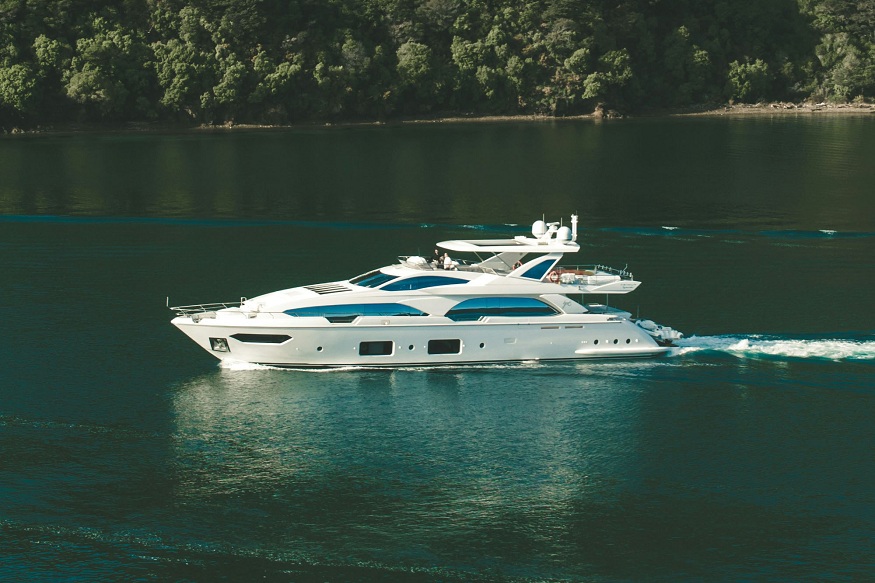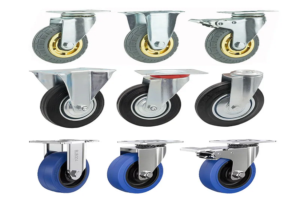A superyacht refit is a significant undertaking that involves complex planning, coordination, and execution. Whether upgrading systems, enhancing interiors, or ensuring regulatory compliance, refits present numerous challenges that can lead to delays, budget overruns, and quality concerns. Given the substantial financial investment involved, it is critical to address these challenges effectively to ensure a successful outcome.
A superyacht surveyor plays a crucial role in overcoming these obstacles by providing expert oversight, enforcing quality control, and ensuring compliance with maritime regulations. Their expertise helps owners and shipyards navigate unforeseen issues, mitigate risks, and deliver a yacht that meets the highest standards of safety, performance, and luxury.
This article explores the most common challenges faced during superyacht refits and how surveyors help resolve them.
Challenge 1: Unexpected Structural Issues
The Problem:
Once the refit process begins, dismantling the yacht can reveal hidden structural problems such as corrosion, hull damage, or material fatigue. These issues can significantly impact the refit timeline and budget, requiring urgent repairs that were not initially planned.
How Surveyors Solve It:
Marine surveyors conduct pre-refit inspections to identify potential structural weaknesses before work begins. Using advanced techniques such as:
- Ultrasonic thickness testing – to detect corrosion or metal fatigue in the hull.
- Dye penetrant inspections – to find microscopic cracks or weld failures.
- Thermal imaging – to assess water intrusion in composite hulls.
By identifying and addressing these issues early, surveyors help prevent costly delays and structural failures that could compromise the yacht’s safety and performance.
Challenge 2: Budget and Timeline Overruns
The Problem:
Superyacht refits often run over budget and beyond the estimated timeline due to unforeseen repairs, delays in material delivery, or inefficiencies in project management. Unchecked costs can escalate rapidly, leading to significant financial strain.
How Surveyors Solve It:
Surveyors help keep projects on budget and schedule by:
- Providing accurate cost assessments before work begins.
- Evaluating shipyard proposals and contracts to ensure fair pricing.
- Implementing milestone-based payment structures to avoid overspending.
- Tracking progress through regular inspections and reporting any delays or inefficiencies.
By closely monitoring the project, surveyors hold shipyards accountable, ensuring that work progresses as planned and that costs remain controlled.
Challenge 3: Compliance with New Regulations
The Problem:
Superyachts must comply with evolving maritime regulations, including environmental laws, safety protocols, and classification society standards. Failing to meet these requirements can result in fines, operational restrictions, or even a vessel being deemed unseaworthy.
How S veyors Solve It:
Surveyors stay up to date with the latest regulations, ensuring that all refit modifications comply with:
- SOLAS (Safety of Life at Sea) – covering fire safety, emergency procedures, and life-saving equipment.
- MARPOL (Marine Pollution Regulations) – ensuring proper waste disposal, fuel efficiency, and emissions control.
- Classification Society Rules – from organizations like Lloyd’s Register, ABS, RINA, and DNV.
- Flag State Regulations – ensuring the yacht adheres to the specific requirements of its registered country.
Surveyors work with shipyards to preemptively address regulatory concerns, obtain necessary certifications, and conduct compliance inspections, ensuring that the yacht is legally and operationally sound.
Challenge 4: Quality Control and Workmanship Issues
The Problem:
Shipyards and subcontractors vary in their expertise, and poor workmanship can result in substandard repairs, incorrect installations, or aesthetic defects. Without proper oversight, quality can suffer, leading to costly rework.
How Surveyors Solve It:
Surveyors enforce strict quality control measures by:
- Conducting on-site inspections throughout the refit process.
- Verifying that materials used match the contract specifications.
- Ensuring certified professionals handle specialized work such as welding, electrical systems, and engine overhauls.
- Checking paintwork, teak decking, and interior finishes for flaws and inconsistencies.
If workmanship issues arise, surveyors demand rectifications before approval, preventing owners from receiving a subpar final product.
Challenge 5: Supply Chain Delays and Material Availability
The Problem:
Global supply chain disruptions can delay the delivery of essential components such as propulsion systems, electrical systems, and luxury materials. Waiting for parts can stall the entire refit process.
How Surveyors Solve It:
Surveyors work proactively by:
- Advising owners on alternative suppliers with shorter lead times.
- Recommending pre-ordering key components before the refit begins.
- Ensuring shipyards have backup plans in place for critical materials.
By strategically sourcing materials and maintaining flexibility, surveyors help keep refits on schedule despite supply chain disruptions.
Challenge 6: Testing and Sea Trial Failures
The Problem:
Once the refit is complete, the yacht undergoes extensive testing and sea trials to ensure all systems function correctly. However, failures in propulsion, navigation, or safety systems can arise, requiring additional work and delaying the handover.
How Surveyors Solve It:
Surveyors oversee comprehensive sea trials that include:
- Engine and propulsion testing – Ensuring optimal fuel efficiency and thrust.
- Stability and maneuverability checks – Evaluating the yacht’s response to different sea conditions.
- Safety equipment testing – Ensuring life rafts, alarms, and emergency systems function correctly.
- Noise and vibration analysis – Measuring comfort levels for guests and crew.
If failures occur, surveyors identify the root cause and work with shipyards to implement corrective measures before final approval.
Challenge 7: Crew Training and Operational Readiness
The Problem:
A newly refitted yacht may feature upgraded systems and technology that the existing crew is unfamiliar with. Without proper training, operational inefficiencies or safety risks can arise.
How Surveyors Solve It:
Surveyors facilitate crew training and familiarization by:
- Organizing manufacturer-led training sessions for new navigation and propulsion systems.
- Conducting safety drills to ensure the crew is prepared for emergency situations.
- Providing operational manuals and best-practice guides tailored to the refitted yacht.
By ensuring crew readiness, surveyors help optimize the yacht’s performance and enhance onboard safety.
Conclusion
Refitting a superyacht is a challenging but rewarding process that requires expert oversight, precise execution, and strategic planning. From unexpected structural repairs to regulatory compliance and quality control, numerous challenges can arise, each of which has the potential to derail the project.
Marine surveyors play an essential role in anticipating, mitigating, and resolving these challenges, ensuring that every aspect of the refit meets the highest standards. Their expertise in risk management, cost control, compliance enforcement, and quality assurance ensures that the owner’s investment is protected, and the yacht emerges from the refit in impeccable condition.
With a surveyor’s guidance, a superyacht refit becomes not just an upgrade, but a long-term enhancement of the yacht’s luxury, performance, and operational efficiency—ensuring that it remains competitive and desirable for years to come.






Be First to Comment